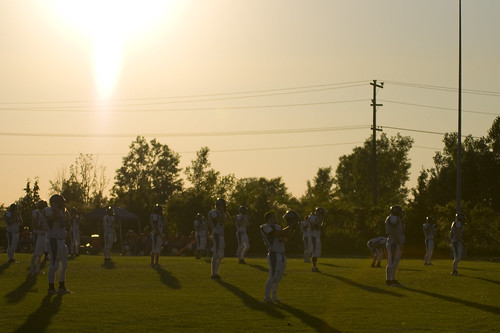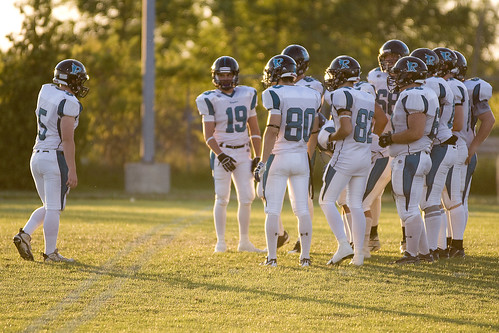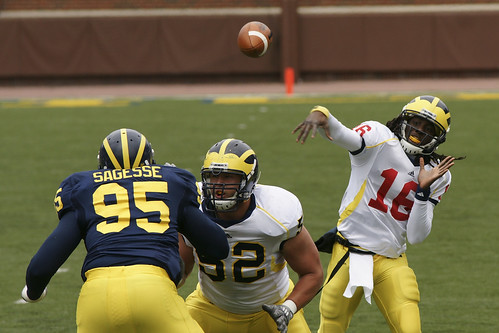
I'm a huge football fan, enjoying all levels of the sport. The Fall has always held a special place for me growing up. While other kids mourned the end of the summer and the coming of school, I eagerly anticipated the start of the football season. And once my brother and I began playing in the Ontario Varsity Football League (OVFL), the summers were also completely consumed by the sport. Hell, by my estimation, between minor leagues, high school leagues, travel leagues, and all-star games, I've played in over 100 competitive games since I was 10 (not including my "prolific" flag football career in university, heh). And this doesn't get in to my football viewing habits. Yes, football is pretty important to me.
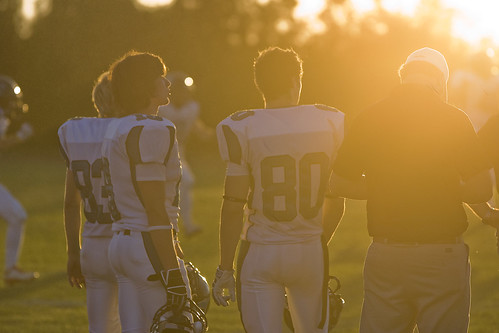
I've played in many different versions of the sport with many different rules: full on Canadian rules in high school with a Canadian sized ball in Juniors and an NFL ball in Seniors; Ontario Football rules which is the same as Canadian rules but with 4 downs instead and a slightly smaller ball in the OVFL; and I've played American rules (4 down, NFL style) at football camps in the US with high school sized balls. As a result, I've always had fun pondering the question of which version of the sport is better? American or Canadian?
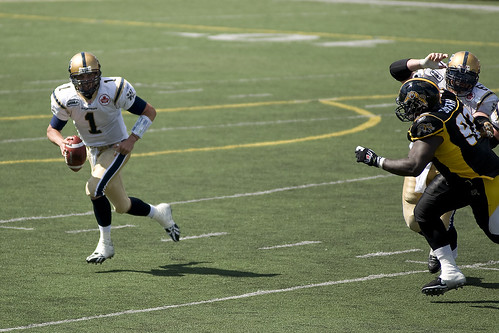
Just to be clear, I'm talking about this from a rules point of view. Comparing the CFL to the NFL is a whole other kettle of fish where you're debating talent level (no debate there), fan support, rivalries, stadiums, broadcasters, etc. And for full disclosure, above all else, I am a huge US college football fan. Especially of the Michigan Wolverines...like 15 years of season tickets, bowl games attended, road games attended, live and die each Fall Saturday, type of fan. Nothing else comes close.
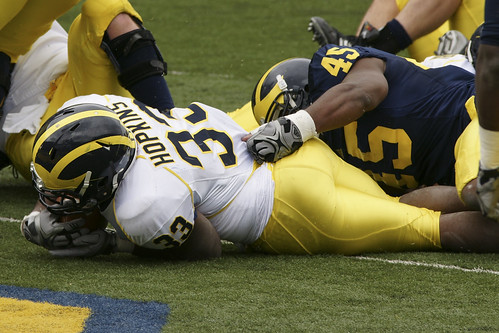
Finally, before we begin, maybe you don't know the differences between the variations of the sport but ask yourself the question: which do you think is better? Once you read below, see if you agree or disagree or if I've changed you mind. I'm curious to hear your thoughts.
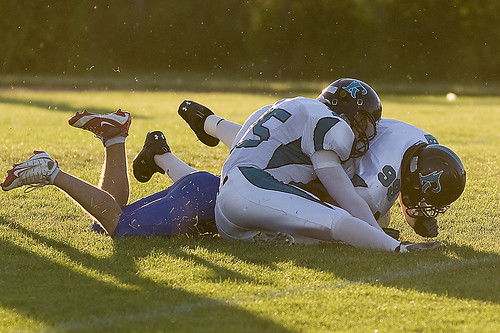
Alright, enough stalling. Since Americans don't usually even remember that there is a Canadian version of football (even though us Canadians practically invented it), they don't usually get caught up in this debate and don't have arguments defending their side. Canadian football fans on the other hand have a bit of a inferiority complex with this issue. They tend to argue that by design the Canadian game is much more exciting because of the propensity for more offense. I will argue that this design does increase the offensive fireworks, but actually makes the game less interesting.
First we must look at the way the Canadian game is set up to bolster the offense's position. Almost every rule difference is set up to give the offensive side of the ball an advantage. Let's look at some of them:
- Defenders must line up one yard off the line of scrimmage. This gives offensive lineman an advantage in blocking, especially in short yardage and pass blocking situations.
- All offensive backfield players are allowed to go in motion towards the line of scrimmage, gaining downfield momentum at the snap of the ball. This is particularly useful for receivers going out on pass patterns as it makes it difficult for defenders to keep up with the speed they have accumulated.
- Due to increased number of players on the field, there is an extra offensive backfield member allowed to go out to receive a pass.
Two other differences deserve a closer look: field size and number of downs. The Canadian football field is absolutely huge and dwarfs the size of its American counterpart. The 110 vs. 100 yards field of play is just the beginning. The endzones are twice the length at 20 yards each compared with American versions at 10 yards. This makes passing a much easier proposition as the entire passing playbook is available to CFL teams when the offense enters the redzone. Contrast that with their American counterparts who often will develop plays specifically suited for the offense as they near the endzone due to the declining amount of real estate to work with. But the real game-changer is the width. Canadian fields run 65 yards wide compared to the 53 1/2 yard width in the US. The added width to the field dramatically opens up the passing lanes for the quarterback and receivers, making it much more difficult for the defense to adequately defend the aerial attack of their opposition. Combine that with the advantages noted above and it quickly becomes clear that the offensive passing game has a huge advantage.

But the Canadian game's most distinctive rule difference does much to mitigate that advantage. "Three Down Football" pretty much defines how outsiders view the sport - and drastically alters the manner in which the game is played. With one less play available to progress 10 yards down the field to get another First Down, the offense must use the advantages above and be efficient in their play execution to maintain offensive possession. A 3 yard rush by the running back, although positive yardage, sets up a still difficult 2nd and long. And, by design, the offense's systemic advantage in the passing game ensures that the running game's importance is significantly diminished. It's the passing game that's the foundation of an offense's game plan while the running game is seen as a change of pace play.
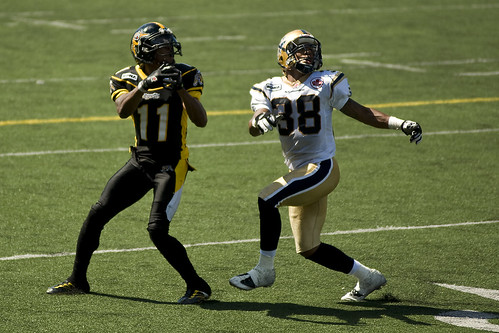
As someone who played quarterback for the majority of my playing days, this seems great on the surface. And many would argue that more passing makes for a more exciting game. But the preponderance of passing in the Canadian game takes so much of the strategy and variety out of football as to render the sport neutered of interesting analysis and innovation. American football has found an equilibrium between favouring rushing versus passing and between offense versus defense (although the trend as of late has been moving towards tightening rules in favour of passing and offense). This has been instrumental in building the cat and mouse game played by opposing teams where they develop innovative strategies to out-scheme their adversaries. In American football there are overarching strategies and philosophies about run vs. pass, about aggressiveness, about cover 2 or the zone blitz, 3-4 vs. 4-3, types of pass offenses, formation philosophies, etc. Canadian football is much more about adjusting your tactics to the players you have. By and large, the strategy remains the same for all teams: pass well and defend the pass well. Innovations on offense and defense are few and far between. In the past 20 years, the game has largely stayed the same, whereas the American version has constantly evolved.

To me, that constant evolution and cat-and-mouse game is what makes the sport of football so interesting, particularly the American version. There is more preparation for each game in football than in any other sport in the world. And that preparation stems from the need to out-think your opponents and prepare for their ever-changing strategies. It's what makes the large amount of down-time between plays not only bearable, but stimulating as you go through the same process that the coach goes through, thinking "what to do next". It creates unique narratives for each contest on the gridiron as you match strategy versus strategy. For the most part, Canadian rules strip the sport of its fundamental question from which all other strategy afterward is based on "to run or to pass?". American football puts that question on a pedestal.
What do you think?
